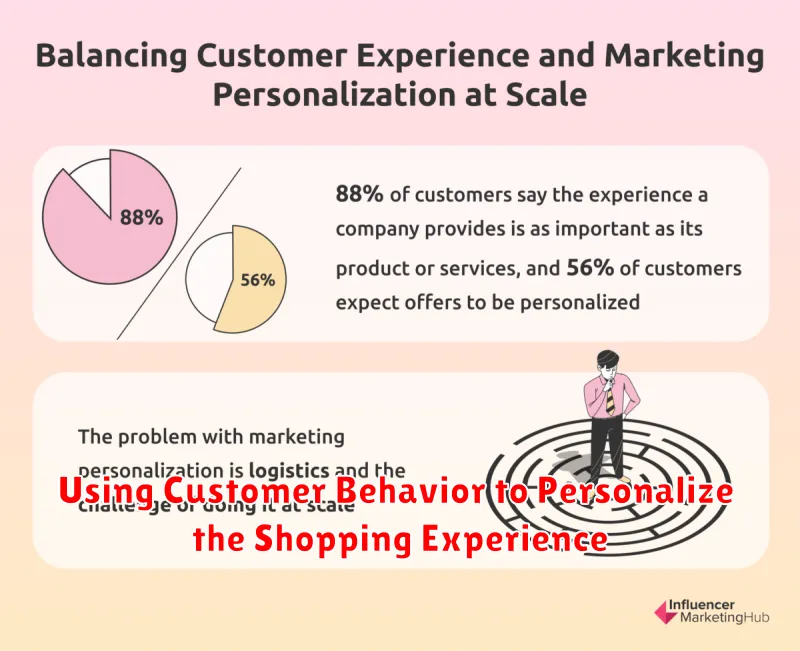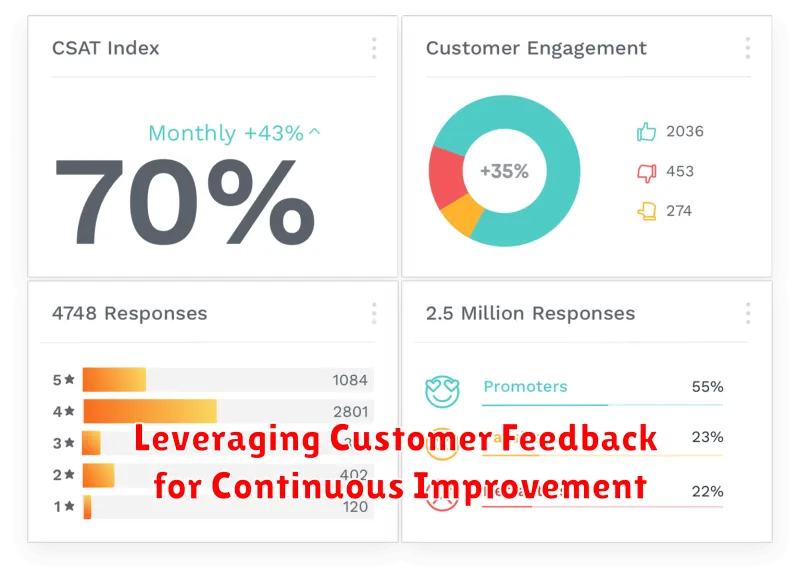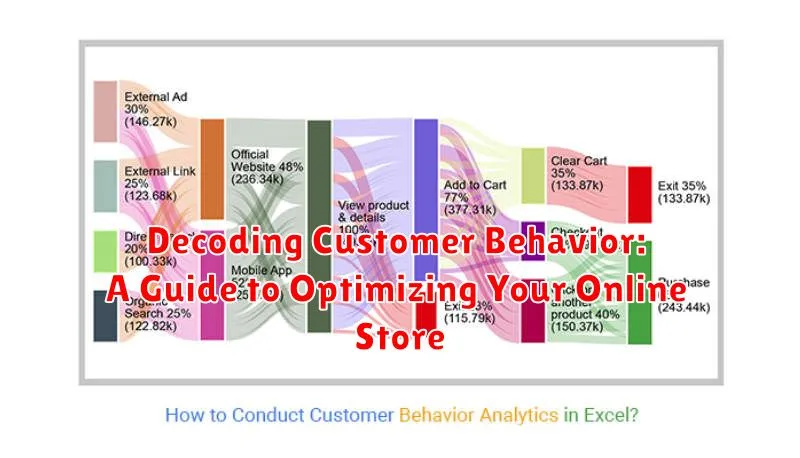In today’s competitive digital landscape, understanding customer behavior is paramount to the success of any online store. Decoding customer behavior allows businesses to tailor their strategies, optimize their online presence, and ultimately drive conversions. This comprehensive guide explores the essential aspects of customer behavior analysis, offering practical insights and actionable strategies to enhance your online store’s performance. From understanding customer journeys and purchase patterns to leveraging data-driven insights, this guide provides a roadmap to optimizing your online store for increased sales and customer satisfaction.
This guide delves into the key principles of optimizing your online store based on a deep understanding of customer behavior. We’ll explore various techniques for gathering and analyzing customer data, including website analytics, customer feedback, and market research. By understanding what motivates your customers, their preferences, and their pain points, you can create a more engaging and effective online experience. This knowledge is crucial for optimizing product offerings, refining marketing strategies, and ultimately, driving business growth through enhanced customer engagement and conversion rates.
Understanding the Importance of Customer Behavior Analysis
In today’s competitive e-commerce landscape, understanding customer behavior is no longer a luxury, but a necessity. Analyzing how customers interact with your online store provides invaluable insights that can significantly impact your bottom line.
By understanding customer behavior, you can optimize various aspects of your online store, leading to increased sales, improved customer satisfaction, and enhanced brand loyalty. It allows you to make data-driven decisions rather than relying on guesswork.
Analyzing customer behavior allows you to identify pain points in the customer journey. Are customers abandoning their carts at a specific stage? Is there a particular product page with a high bounce rate? By pinpointing these issues, you can implement targeted strategies to improve the user experience and streamline the purchasing process.
Collecting and Interpreting Customer Data
Data collection is crucial for understanding customer behavior. Effective methods involve utilizing various tools and techniques to gather relevant information.
Website analytics platforms provide valuable insights into user interactions, such as page views, bounce rates, and time spent on site. This data helps identify popular products and understand customer navigation patterns.
Surveys and feedback forms offer direct customer input, allowing businesses to gauge satisfaction levels and identify areas for improvement. These tools provide qualitative data that complements website analytics.
Interpreting collected data requires careful analysis to extract meaningful insights. Analyzing trends and patterns can reveal valuable information about customer preferences and pain points.
Data visualization tools can help represent complex data sets in an understandable format, facilitating the identification of key trends and patterns.
Identifying Key Customer Segments
Customer segmentation is the process of dividing your customer base into distinct groups based on shared characteristics. This allows for more targeted and effective marketing strategies. By understanding the unique needs and preferences of each segment, you can tailor your messaging, product offerings, and overall shopping experience for optimal results.
Several factors can be used for segmentation, including:
- Demographics: Age, gender, location, income, education, etc.
- Psychographics: Lifestyle, values, interests, personality traits.
- Behavioral patterns: Purchasing frequency, average order value, browsing history, product preferences.
- Technographics: Preferred devices, operating systems, social media platforms.
Once you’ve identified your key segments, you can create buyer personas. These are semi-fictional representations of your ideal customer within each segment, providing a clearer picture of their motivations and needs.
Using Customer Behavior to Personalize the Shopping Experience

Personalization is key to enhancing the customer journey and fostering loyalty. By leveraging collected customer behavior data, online stores can tailor the shopping experience to individual preferences.
Targeted product recommendations are a powerful personalization tactic. Analyzing browsing history, past purchases, and even abandoned carts allows businesses to suggest relevant items that align with customer interests. This increases the likelihood of conversion and boosts average order value.
Customized promotions and offers are another effective way to personalize the shopping experience. By understanding customer segments and their respective price sensitivities, businesses can present tailored discounts and promotions that resonate with individual needs and encourage purchases.
Personalized content can significantly improve engagement. Displaying content relevant to a customer’s browsing history or purchase patterns creates a more engaging and informative experience. This can include blog posts, product videos, or even user-generated reviews specific to their interests.
Analyzing Customer Purchase Patterns
Understanding customer purchase patterns is crucial for optimizing sales strategies and inventory management. By analyzing these patterns, businesses can anticipate future demand, tailor marketing efforts, and ultimately increase revenue.
Key metrics to track include average order value (AOV), purchase frequency, and product affinities. AOV reveals how much customers typically spend per transaction. Purchase frequency indicates how often customers return to buy. Product affinities highlight which items are commonly purchased together, enabling effective cross-selling and bundling opportunities.
Analyzing purchase patterns can also reveal seasonal trends and the impact of marketing campaigns on sales. By identifying peak buying periods, businesses can optimize inventory levels and staffing accordingly. Studying the impact of marketing initiatives on purchase behavior allows for data-driven adjustments to maximize ROI.
Optimizing Website Design Based on Customer Behavior
Understanding customer behavior is crucial for creating a website that converts. By analyzing how customers interact with your online store, you can make data-driven decisions to optimize its design and improve the user experience. This leads to increased engagement, higher conversion rates, and ultimately, greater revenue.
Key areas to focus on include navigation and site structure. A clear and intuitive navigation menu allows customers to easily find what they are looking for. Organize your products logically into categories and subcategories. Consider using a search bar with autocomplete functionality to further enhance the browsing experience. Website speed is another critical factor. A slow-loading website can frustrate customers and lead to abandoned carts. Optimize images, minimize HTTP requests, and leverage browser caching to ensure fast loading times.
Mobile responsiveness is no longer optional. With the majority of online traffic coming from mobile devices, your website must be designed to adapt seamlessly to different screen sizes. This ensures a consistent and user-friendly experience across all devices.
Improving Customer Service Strategies with Customer Insights
Customer insights play a crucial role in shaping effective customer service strategies. Understanding customer behavior, preferences, and pain points allows businesses to tailor their support approach for maximum impact.
Analyzing customer data, such as purchase history, browsing behavior, and support interactions, can reveal valuable patterns. For example, identifying frequently asked questions can lead to the creation of self-service resources like FAQs or knowledge bases, freeing up support agents to handle more complex issues.
Personalized customer service is another key benefit of leveraging customer insights. Knowing a customer’s past interactions and preferences allows agents to provide tailored solutions and proactive support. This personalized approach can significantly enhance customer satisfaction and loyalty.
Utilizing customer feedback, both positive and negative, can also be used to refine customer service strategies. Regularly analyzing feedback and identifying areas for improvement can lead to more efficient and effective support processes.
Leveraging Customer Feedback for Continuous Improvement

Customer feedback is a goldmine of information for continuous improvement. Actively soliciting and analyzing feedback provides invaluable insights into customer experiences, pain points, and unmet needs. This data empowers businesses to refine their online store and enhance customer satisfaction.
Several effective methods exist for gathering feedback, including online surveys, feedback forms embedded on your website, and monitoring social media channels. Customer reviews, both positive and negative, offer another valuable source of information.
Analyzing this feedback requires a systematic approach. Identify recurring themes and prioritize areas for improvement. For instance, numerous complaints about a complicated checkout process clearly indicate a need for simplification. Address negative feedback promptly and transparently to demonstrate a commitment to customer satisfaction.
By incorporating customer feedback into a cycle of continuous improvement, businesses can ensure their online store evolves to meet the ever-changing needs and expectations of their customers. This proactive approach fosters customer loyalty and drives sustainable growth.

